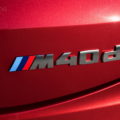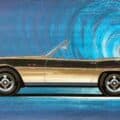Every day, in all corners of the globe auto accidents take place. We read about terrible stories in the newspapers or see them on TV of how a simple phone call, text or moment of distraction caused damage to property, vehicles and in the worst and saddest of cases, taken lives.
The thing is, most if not all of these accidents can be entirely avoided if the driver focuses on the task at hand, and that is operating a vehicle. Today, we have more and more distractions entering the cabins of our vehicles that make it harder to focus entirely on driving. Time constraints mean we eat while we drive, apply lipstick, shave, text, answer and make phone calls, plug in chargers, send and receive emails and even socialize with social media apps. We want to do it all.
The number of portable devices brought on-board that were not originally designed for use while driving has steadily gone up. These devices display small text on small screens (in comparison to a navigation screen) and sport small keyboards. BMW, Mercedes-Benz, Audi, Porsche, Volkswagen and Volvo to name a few have started including USB and Bluetooth connections in their vehicles to make the operation and use of hands-free phones, iPod/MP3 integration as well as Text-to-Speech and Text-by-Voice applications much more accessible and less strenuous. Hence, less distracting for the driver.
Studies have shown that the likelihood of a crash or a near crash incident to occur can be related to certain actions undertaken by the driver, with some being more dangerous than others. The following actions are considered the most dangerous, with the top being highest risk descending to lower risk.
– Reaching for moving object
– External distraction
– Reading
– Applying makeup
– Dialing a hand-held device
Many automotive manufacturers, including the ones mentioned above realize this and as such, have programs in place to develop and introduce safety systems, smart designs and technology into their cars that make driving safer not only for the driver and their passengers but also everyone else around.
Enter Human Machine Interface research and standards or HMI for short.
To unburden the driver, existing technologies as well as new ones have been taken and implemented intelligently within cars in such a way so as to combat driver distractions. They include:
– Forward Collision Warning Systems
– Active Cruise Control
– Night Vision with Pedestrian Detection
– Lane Departure Warning Systems
– Head-Up Display
– Brake Drying Systems
– Blind Spot Detection
Technology and innovation are the main contributors to vehicle safety and as a result, well integrated systems reduce potential distractions. This is why HMI is such a powerful and necessary tool in today’s auto sector. Industry wide measures should be taken and a standardization process should occur. Guidelines for HMI should cover all information and communication systems used in-car as well as portable devices.
BMW’s iDrive philosophy beautifully blends these principles and ideas into one integrated system which is broken into several sections. The Installation itself places highly mounted displays that are easy to read and control such as the Head-Up Display. The Information is displayed in ISO-Character sizes on displays that minimize glare and reflections. Interaction of these systems can be interrupted at any time while System Behavior automatically switches off TV and Video functionality for the driver.
Another way BMW minimizes distractions and reduces risk is by creating a driver oriented cabin/dashboard.
There is no doubt about the fact that drivers bring distractions into their vehicles. Auto manufacturers need to avoid in car systems that amplify said distractions or even bring new ones to the table. At the same time, they need to incorporate systems that actively help the driver with some responsibilities and provide access to the portable devices that drivers use in a safe manner.
Lastly, programs such as the DON’T TXT & DRIVE should be expanded and promoted in order to make both drivers and non-drivers aware of the dangers present when distractions take place behind the wheel. Losses of this kind are even more painful when you know that it is something entirely preventable.
Let’s meld technology with intelligent application, educate drivers on the dangers that we ourselves create when we step into our own cars with potential distracters and of course, exercise some good old fashioned common sense. Until next time,
Happy Motoring!









































































